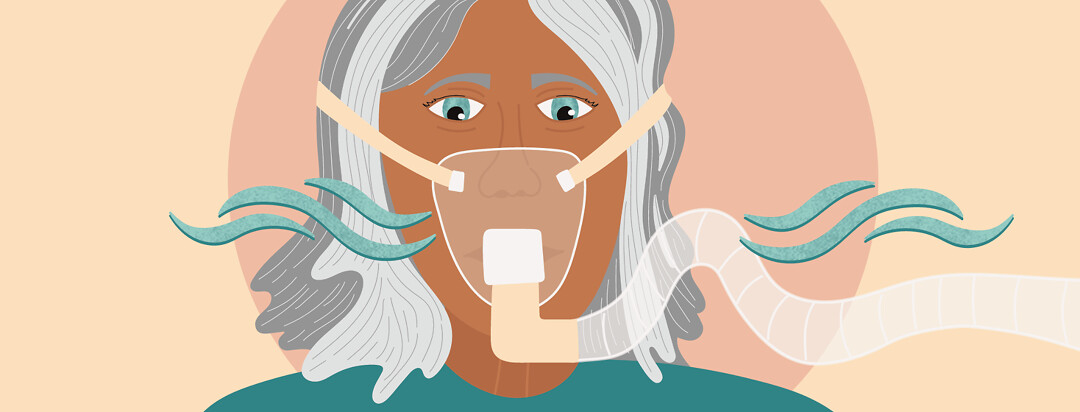How to Conquer CPAP Leaks: Tips and Tricks
Any new positive airway pressure (PAP) user goes through a series of steps. After meeting with a specialist and getting your diagnosis confirmed, you must learn to use your new therapy – consistently and successfully.
After starting to use PAP, there are 3 main possibilities:
- PAP works! It’s easy, or it gets easier over time.
- It’s uncomfortable and disruptive. Without support, you might give up.
- You think it’s working, but the mask leaks.
Your goal? A perfect mask seal.
Even people who use PAP successfully experience mask leaks. Let’s take a closer look at the various kinds of leaks and what you can do about them.
What causes CPAP leaks?
Leaks can be caused by:
- Poor mask seal
- Leaking tubing
- Oral leak
- Intentional leak
1. Poor mask seal
This is PAP’s biggest problem: the mask simply doesn’t fit. If it doesn’t seal to the landscape of your face, pressurized air will escape.
Solution: Try new masks to find one that most closely and comfortably fits the contours of the cheeks, bridge of the nose, and chin. Also, while trying on masks, recline in your favorite position. Your sitting or standing profile, especially the jaw’s position, changes while reclining.
Other causes of mask seal-related leaks include:
A worn-out mask
The silicone may soften or grow thin, which can lead to holes, tears, or cracking that leaks pressurized air.
Solution: Replace your mask.
Old headgear
Over time, headgear can stretch out. Always adjust it as you use it for this reason. At some point, it will finally stretch too much to be effective.
Solution: Replace your headgear.
A dirty mask
The silicone comes into regular contact with cleaners, skin oils, and other facial residues, building up and compromising the seal.
Solution: Prioritize daily cleaning.
Pressure challenges
Certain kinds of masks work better for higher pressures. Nasal (over the nose) masks often work best for delivering higher pressures.
Solution: Discuss leak issues with your sleep specialist. Ask to try different mask types and sizes better suited to higher pressures.
Improper use of seal supports
You may use a fabric cushion liner or lotion approved for improving seal. However, you may still struggle with leaks.
Solution: Make sure you need seal support; newer cushions provide better seals than older models. Then, check that you’re using your support correctly.
Sleeping position
Side and stomach sleepers may experience mask position torquing.
Solution: Pick a mask that most comfortably and reliably suits your sleeping position. Also, a side-sleeper CPAP pillow provides a cutout allowance for your apparatus. Finally, consider learning or relearning how to sleep on your back, if possible.
Sleeping behavior
Are you a restless sleeper? Each new movement risks breaking the seal. Also, some unknowingly pull the mask partly or completely off.
Solution: Talk to your sleep specialist. They may want to check your mask settings or screen you for other sleep disorders causing this behavior.
2. Leaking tubing
Tubing that’s old or damaged (by pets, small children, or negligence) results in holes and cracks that leak. Those using humidification will awaken to damp spots on the bed.
Solution: Replace the tubing. Meanwhile, keep it out of reach of pets or small children.
3. Oral leak
Also known as oral breathing or mouth breathing, this describes pressurized air leaking through your open mouth. When this happens, your therapy ceases to work. The brain, as a defense against blocked breathing, prompts you to breathe through your mouth to maintain proper oxygen and carbon dioxide levels in your blood as you sleep. Oral breathing happens due to a congenital problem or as a learned behavior for those unable to breathe nasally (awake or asleep).1
Solution: Use a chin support, which gently holds the mouth closed as you sleep. Or, consider a full-face mask if you regularly breathe through your mouth. Finally, talk to your sleep specialist about the causes of your oral breathing, as you may need to address structural issues in the jaw.
About mouth taping
Some healthcare professionals suggest using medical tape to seal your mouth while using PAP. Be warned: Mouth taping is controversial, scientifically unproven, and potentially unsafe.2
While asleep, your taped mouth may lead to aspirating (breathing in) substances unintended for the respiratory tract, such as:
- Stomach acids (reflux)
- Excess saliva
- Regurgitation (flu, foodborne illness)
This increases your risk for aspiration pneumonia, lung infection, chronic cough, asthma, or bronchitis.
4. Intentional leak
The first kind of intentional leak is through the exhale port – the vent in the space between the mask and tubing that releases carbon dioxide. It's normal and factored into the manufacturer’s pressure algorithm.
The other is normal leak coming from regular use. No mask is airtight; they’re all expected to leak a little during use. Your leak score indicates when your leak exceeds acceptable levels. Intentional leak needs no fixing.
Interested in reading more about getting the most out of your CPAP? Explore our featured collection on tips and tricks for CPAP users.

Join the conversation